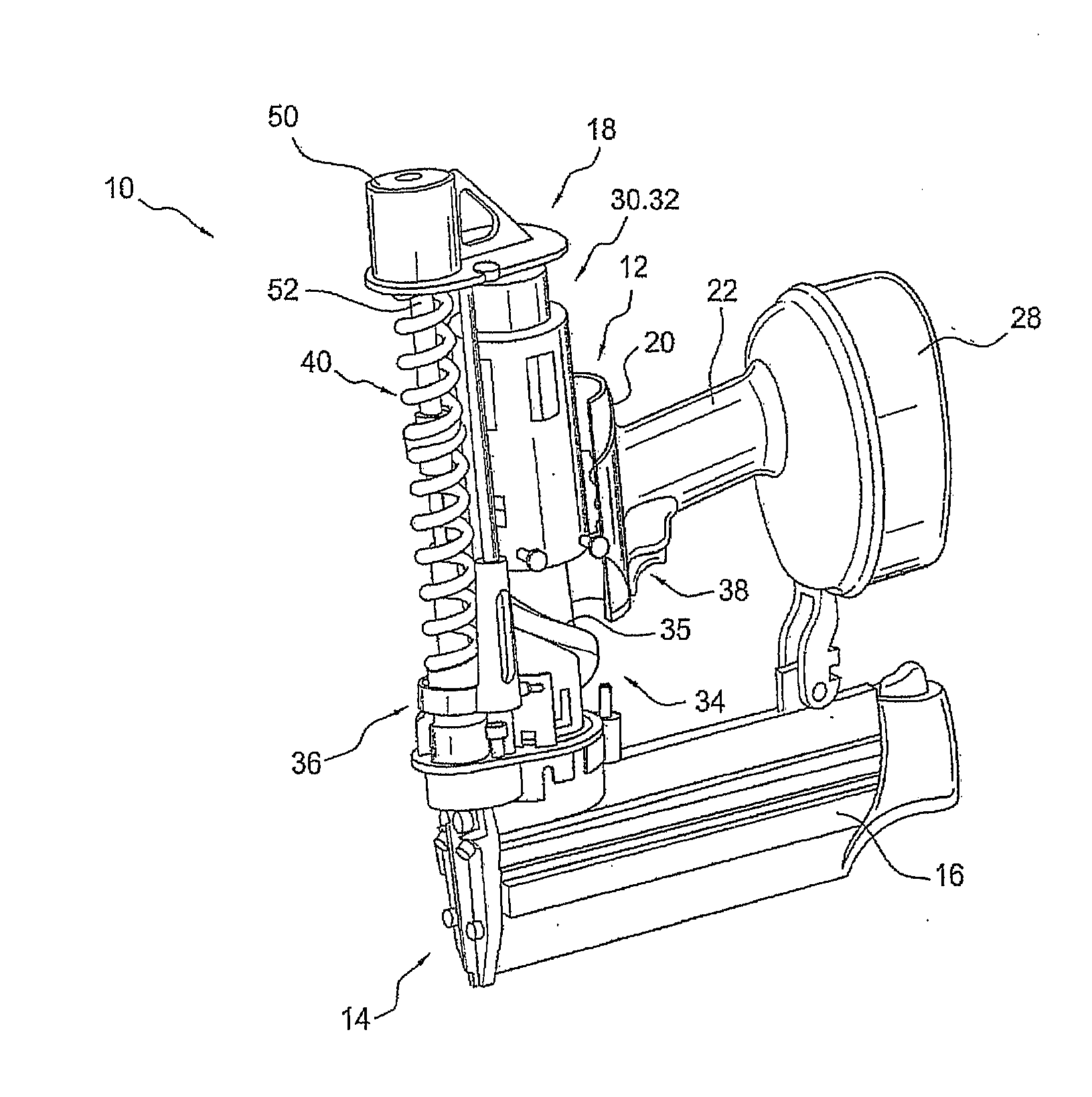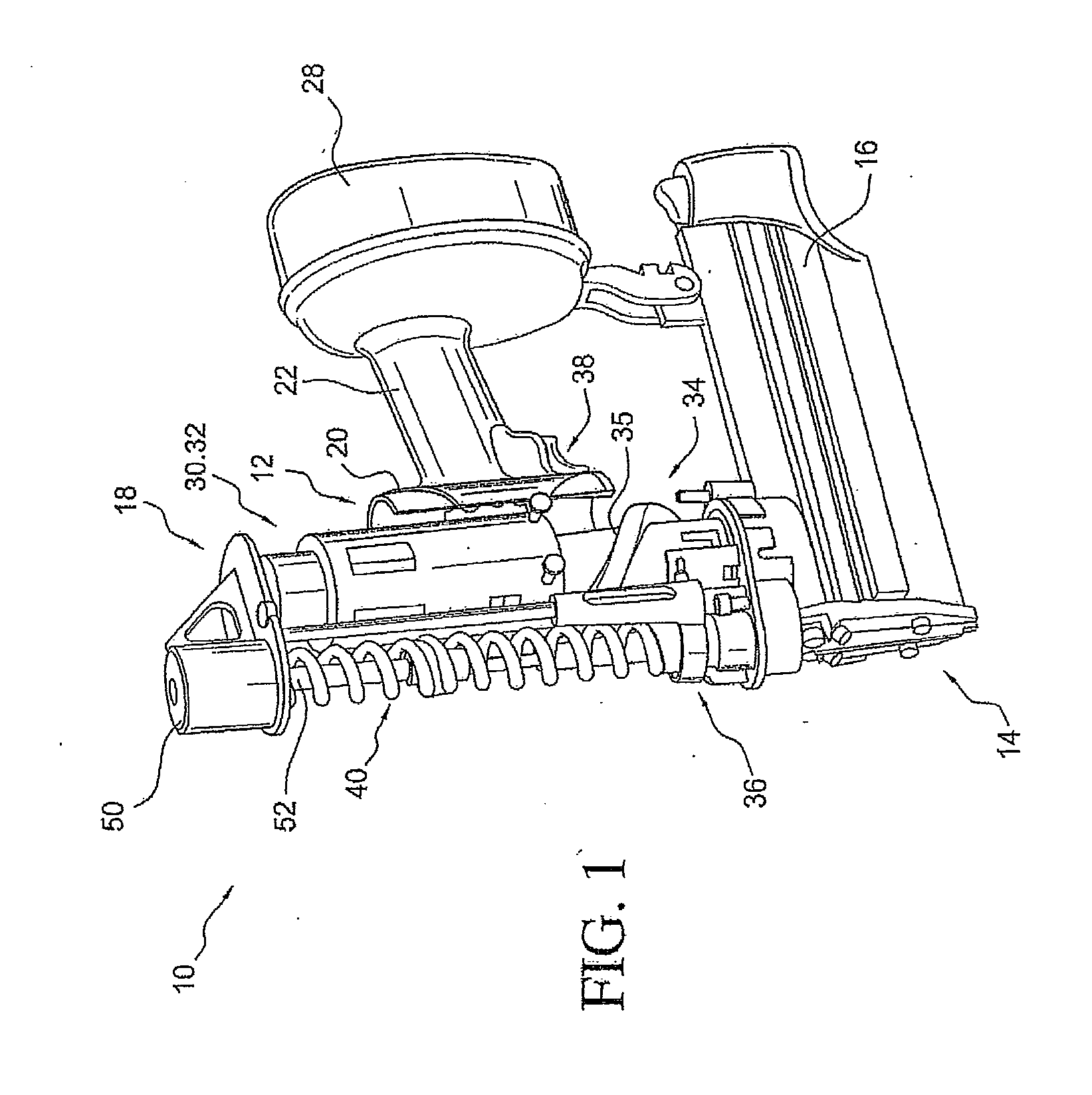Fastener driving device
a technology of driving device and fastener, which is applied in the direction of manufacturing tools, percussive tools, power-driven tools, etc., can solve the problems of affecting the use of tools, so as to achieve the effect of sufficient energy to driv
- Summary
- Abstract
- Description
- Claims
- Application Information
AI Technical Summary
Benefits of technology
Problems solved by technology
Method used
Image
Examples
Embodiment Construction
[0159]FIG. 1 illustrates a fastener driving device 10 according to one implementation of the present invention. As shown, the fastener driving device 10 includes a housing assembly 12, a nose assembly 14, and a magazine 16 that is operatively connected to the nose assembly 14 and is supported by the housing assembly 12. The device 10 also includes a power operated system 18 that is constructed and arranged to drive fasteners that are supplied by the magazine 16 into a workpiece. The housing assembly 12 includes a main body portion 20, and a handle portion 22 that extends away from the main body portion 20, as shown in FIG. 1. The majority of the main body portion 20 is removed in FIG. 1 so that features contained within the main body portion 20 may be more easily viewed. The handle portion 22 is configured to be gripped by the user of the fastener driving device 10.
[0160]The nose assembly 14 is connected to the main body portion 20 of the housing assembly 12. The nose assembly 14 de...
PUM
| Property | Measurement | Unit |
|---|---|---|
| Energy | aaaaa | aaaaa |
| Nuclear radiation | aaaaa | aaaaa |
| Fraction | aaaaa | aaaaa |
Abstract
Description
Claims
Application Information
 Login to View More
Login to View More - R&D
- Intellectual Property
- Life Sciences
- Materials
- Tech Scout
- Unparalleled Data Quality
- Higher Quality Content
- 60% Fewer Hallucinations
Browse by: Latest US Patents, China's latest patents, Technical Efficacy Thesaurus, Application Domain, Technology Topic, Popular Technical Reports.
© 2025 PatSnap. All rights reserved.Legal|Privacy policy|Modern Slavery Act Transparency Statement|Sitemap|About US| Contact US: help@patsnap.com



